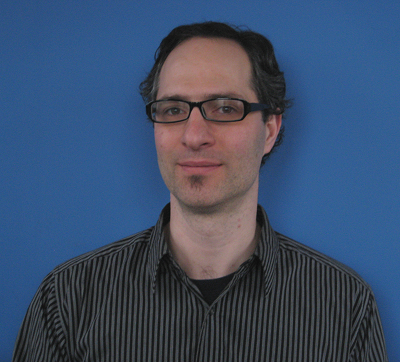 Daniel N. A. Bolon |
A single change to even one of the thousands of DNA codes that make up each gene in the human genome can result in devastating diseases such as cancer, cystic fibrosis, muscular dystrophy or Huntington’s Disease. A similarly minor change in the DNA of a virus or bacteria can give rise to drug resistant strains that are difficult for physicians to treat with standard drug therapies. Knowing the huge impact that tiny changes can have, scientists have long sought ways to study the effects genetic mutations can have on an organism, but have been hampered in these efforts by an inability to easily and efficiently produce and analyze the thousands of potential changes possible in even one small gene.
A new study by scientists at UMass Medical School, published in the Proceedings of the National Academy of Sciences, describes a novel technique to produce all potential individual mutations and, using deep sequencing technology, simultaneously analyze each change’s impact on the cell.
“In nature, genetic mutations actually occur infrequently and at random,” said Daniel N. A. Bolon, PhD, assistant professor of biochemistry & molecular pharmacology and lead author of the PNAS study. “But these small changes have profound consequences on an organism’s ability to survive. We’ve developed an approach that allows us to generate all the possible individual changes and, at the same time, in the same test tube, study the impact of each change.”
Using sequencing technology inspired by the human genome project, Dr. Bolon and colleagues have developed a method called EMPIRIC to analyze hundreds of different mutations in a single test tube. Ordinarily used to read a DNA sequence over an entire genome this Band-aid-sized sequencing chip was utilized by Bolon to accurately count and record the abundance of hundreds of distinct cells in a test tube that differ by individual mutations. Simply put, mutations that are beneficial will grow rapidly and increase in abundance, while mutations that are harmful will decrease in relative abundance.
Examining a nine-amino-acid region essential for the survival of baker’s yeast, Bolon and colleagues were able to analyze 180 different amino acid substitutions representing more than 500 different DNA mutations for this small genetic region. “The key breakthrough was the realization that we could analyze a multitude of mutations at the same time, in the same test tube,” said Bolon. “What would have taken years of work and thousands of test tubes can be done in a matter of days in one test tube.”
Their findings were consistent with current models of molecular evolution that show a large number of mutations are harmful, but the great majority of mutations have little to no effect on the cell’s function. With this approach, scientists can gain new insights into a host of biological questions including how environmental pressures influence evolutionary processes on a genetic level, what mutations are likely to cause genetic disease and how to screen viruses for mutations that might lead to drug resistance.
Viruses, because of their relatively limited genetic code, represent an ideal target for this novel approach. For example, with this new technique, an entire viral genome can be systematically screened for its likelihood to develop resistance to drug therapies. By inserting the drug into the test tube with all the possible mutations, scientists can systematically identify all individual viral mutations that increase drug resistance. Currently, resistance screening techniques are less effective because they rely on testing random mutations, leaving the possibility that an untested mutation might lead to resistance. Systematically identifying resistant mutations may provide new routes to the development of therapeutics and vaccines that minimize resistance.
“One of the truly exciting aspects about this approach is that it’s so general,” said Bolon. “While our experiments were carried out on yeast cells, it can be applied to any fast growing cell that can be genetically manipulated such as cancer cells, viruses or bacteria.”